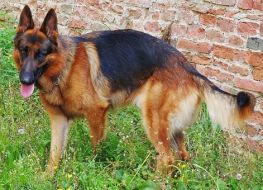How Military K9s Make Our World Safer and More Secure

The life-saving work of military K9s often goes unrecognized, but these highly trained dogs play an integral role in creating a safe and secure world for us all. From explosive detection to medical assistance on the battlefield, their powerful noses, intuition, and unwavering loyalty empower them to be at the frontlines of modern warfare and law enforcement operations around the globe. In this blog, we’ll explore how these four-legged heroes are making a difference by decreasing threats, monitoring borders, and responding faster than humans in some cases. With more insight into their daily duties, it is apparent that military K9s deserve our utmost respect as they prove time after time their vital importance in protecting national security.
Learning the Basics of K9 Training for Military Applications
Learning the basics of K9 training for military applications requires a great deal of dedication and focus on the part of both handler and animal. Training a K9 is an important investment in both time and resources, but it can provide invaluable service to our nation’s armed forces in many situations. To ensure that a K9 team is successful, both team members must be properly trained on the unique skills necessary for military environments such as responding under gunfire, identifying explosives, searching for survivors, and tracking targets for long distances. With the proper guidance and support from experienced trainers, any team has the potential to become a successful asset to their unit or mission.
Exploring How K9s Provide Superior Detection Capabilities
K9s, or dogs, are astounding members of law enforcement teams around the world. With superior hearing, smell, and focus, they have an innate ability to detect suspects and illegal substances that surpasses what humans can bring to bear. Police officers specializing in K9 detection are trained extensively on how to get the best from their partner and both situations requiring a passive search (e.g., locating missing persons) or an active search (e.g., finding evidence such as drugs and explosives) can benefit from utilizing the skill of these hardworking animals. Given their incredibly effective nature, K9s not only save officers time but often increase the rate of success in apprehending criminals or obtaining evidence for court use by more than twofold.
Understanding the Different Types of Military Working Dogs
Understanding the different types of military working dogs is a key part of recognizing the valuable contributions these animals make to the safety and success of our armed forces. Military working dogs cover a wide range of positions and must have specific skill sets tailored to their intended roles, such as explosives detection, search and rescue, attack, protection, drug detection, and more. These canines are often cross-trained to meet mission demands and achieve maximum efficiency in deployed operations. Additionally, they are essential members of the unit with strong social bonds formed between them and their human counterparts. As evidence has shown over many years of successful deployment, military working dogs provide real life-saving value to modern warfare and should be recognized for their bravery and devotion.
Discovering How K9s are Used in Search and Rescue Missions
K9s are some of the most trusted, loyal, and capable partners on search and rescue missions. Trained to pick up on even the faintest of scents, search and rescue dogs assist first responders in locating lost or trapped victims in areas that humans cannot access. From landslides to avalanches and water-related rescues – they cover a variety of terrains and operations making an immeasurable impact. Equipped with focused drive, superior tracking ability, and power to detect people no matter the environment, these four-legged heroes have consistently made headlines for their unbeatable performance during numerous life-saving efforts. It is through their resources and skills that many who had little hope have been pulled out safely.
Examining the Role of Military Working Dogs in Crowd Control
Military working dogs are more than just pets and companions; they are valuable assets to the armed forces. In recent years, they have been increasingly trained and utilized in crowd control operations throughout the world. The formidable presence of these determined canines helps to deter hostile actors, while their acute sense of smell allows security personnel to detect threats early on and take preemptive action. Not only do military working dogs serve an instrumental role in ensuring the safety of crowds within public spaces—their tenacity and courage make them highly respected symbols of national security that continue to instill patriotic pride and devotion among civilians across the globe.
Highlighting The Amazing Bond between Handler and Dog
Working together, handlers and dogs are often referred to as a ‘team’. This partnership is at its best when the handler knows how to command their canine partner. A successful handler can understand the thoughts and needs of their dog in order to channel the dog’s enthusiasm and specific skills into effective teamwork. What makes this bond so incredible is that it does not require spoken words or telepathy – it comes from experiencing situations together and training for life-saving operations. It takes trust, respect, mutual understanding as well as strong emotions like loyalty and love; but most importantly, an unbreakable connection between humans and canines that sets them up for success in even the toughest conditions.
K9s are an incredibly important asset in military applications, providing invaluable skills that no human assistance can replace. From their superior detection capabilities to search and rescue missions, military working dogs can make a profound difference in the efficiency and effectiveness of any task they undertake. Their amazing bond with their handlers is particularly remarkable, as it showcases the incredible bond between humans and animals that ultimately are integral in successful engagements. Overall, K9s will continue to serve not only as assets in warfare but also as beloved pets that bring joy and companionship to people around the world.


Leave a Reply